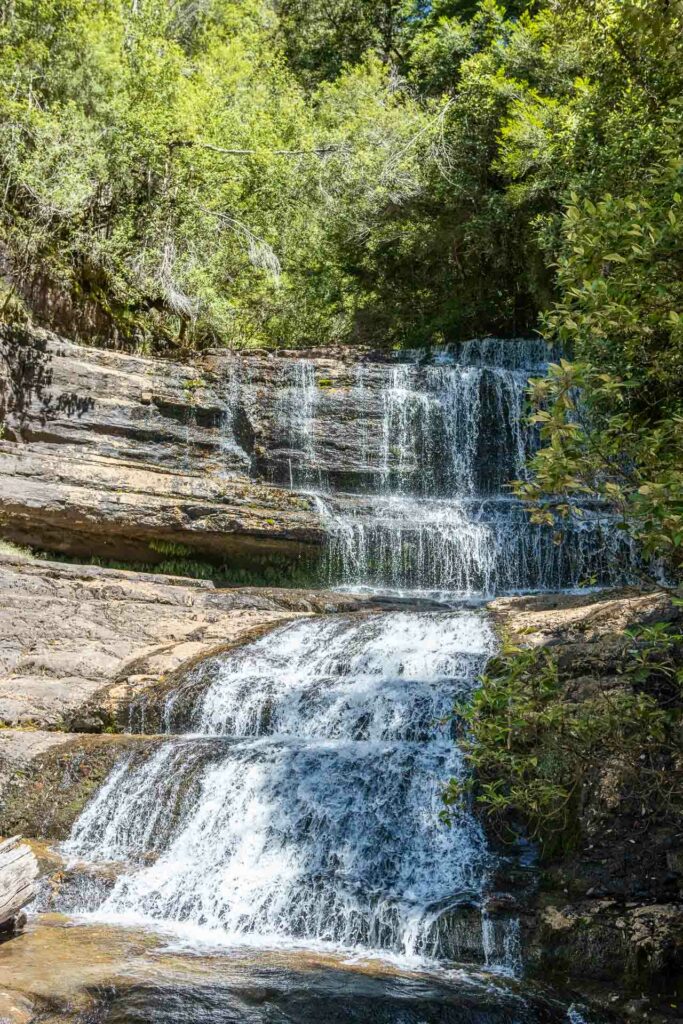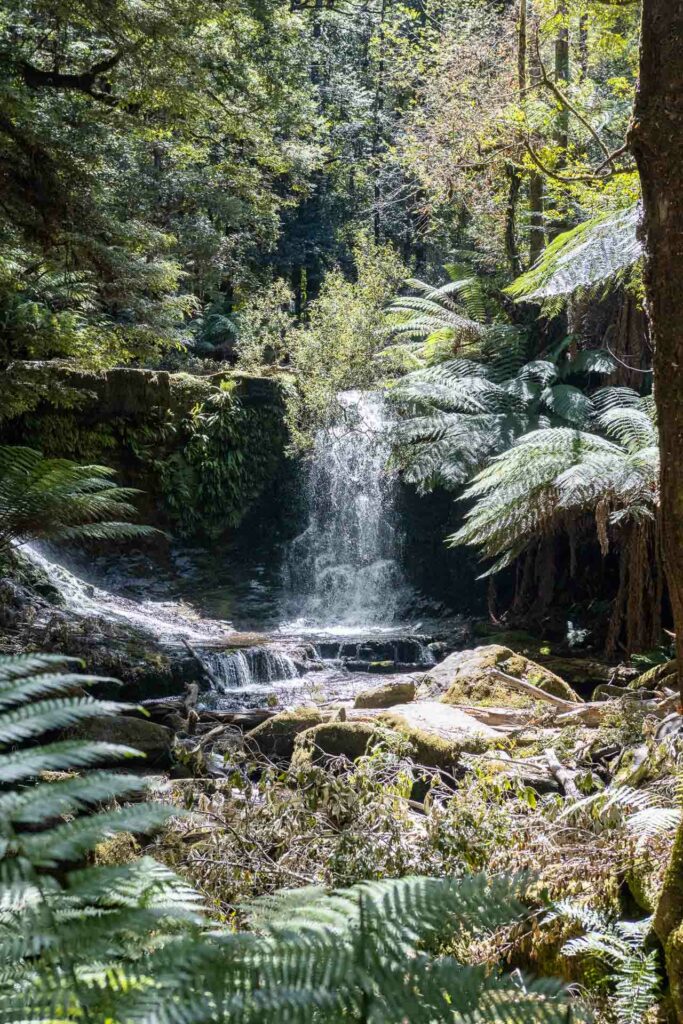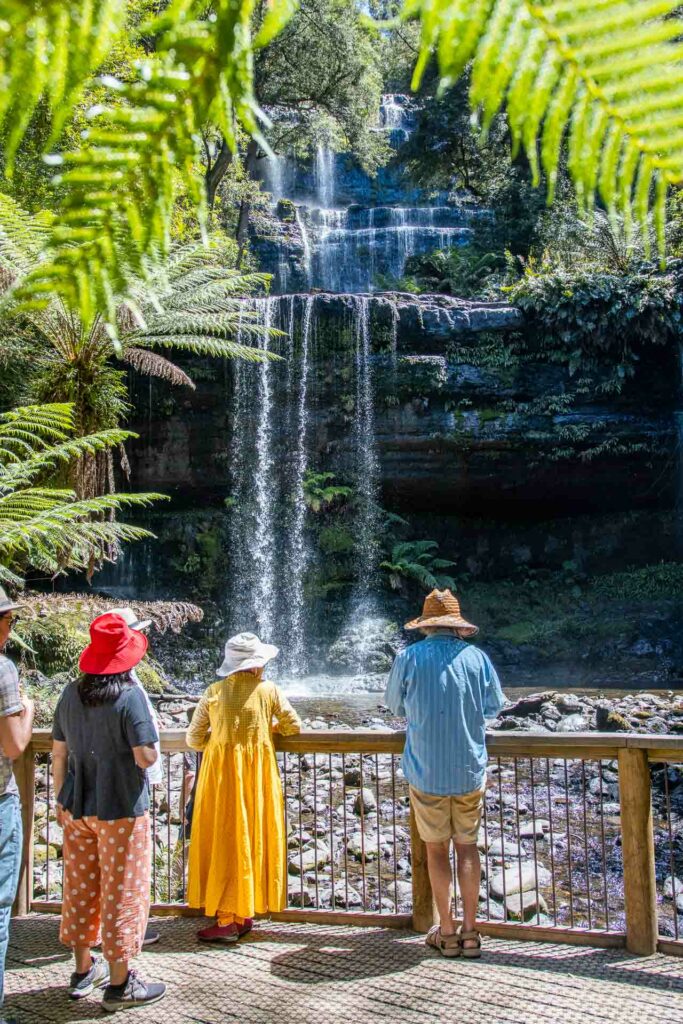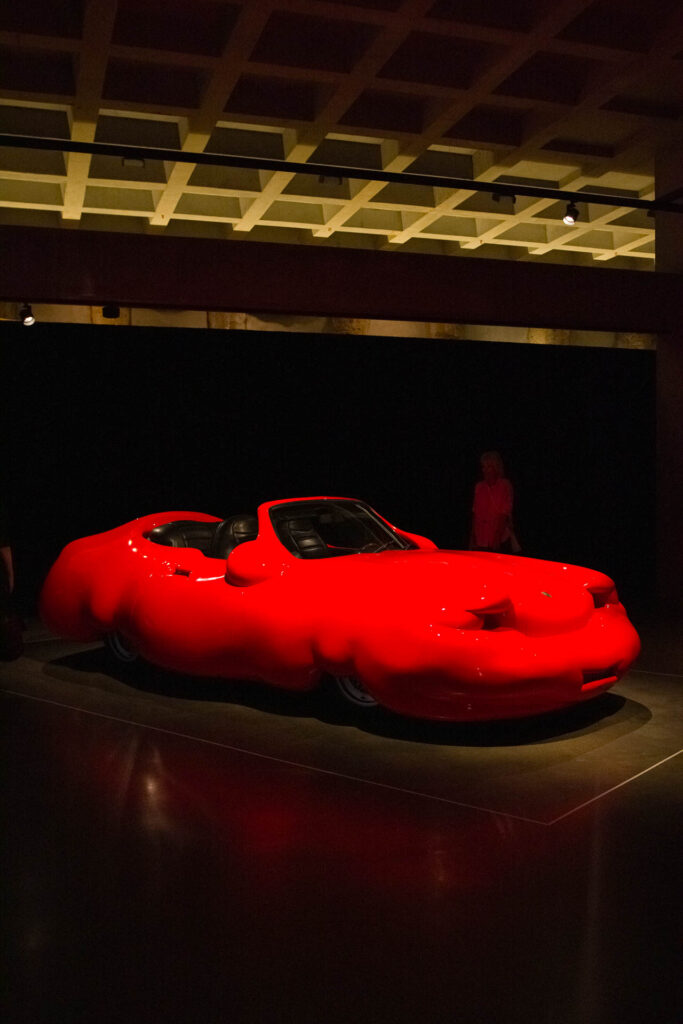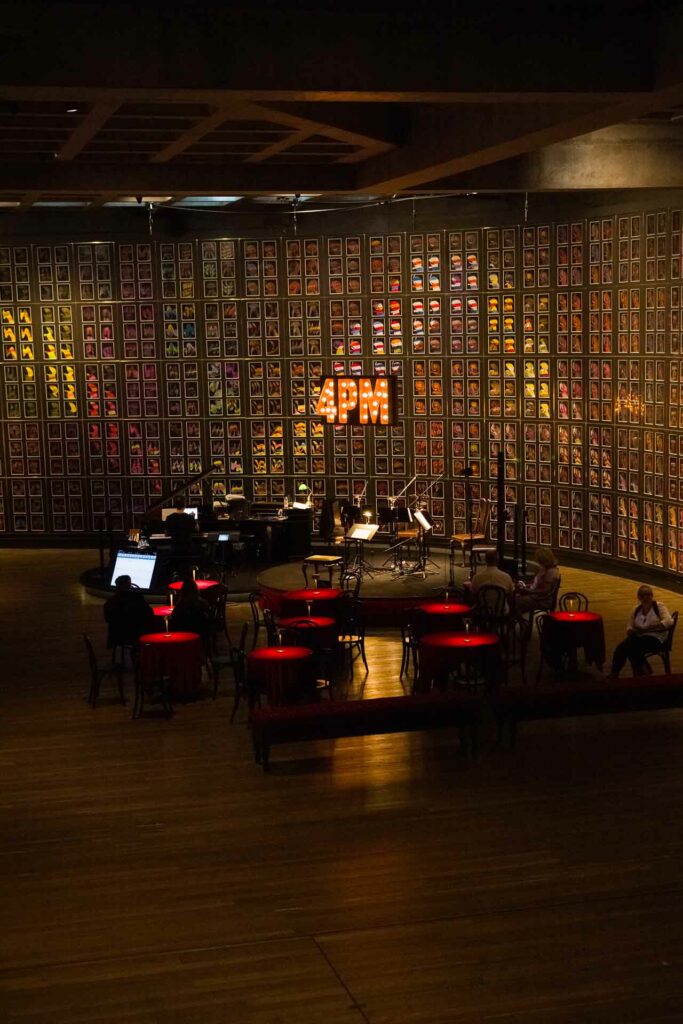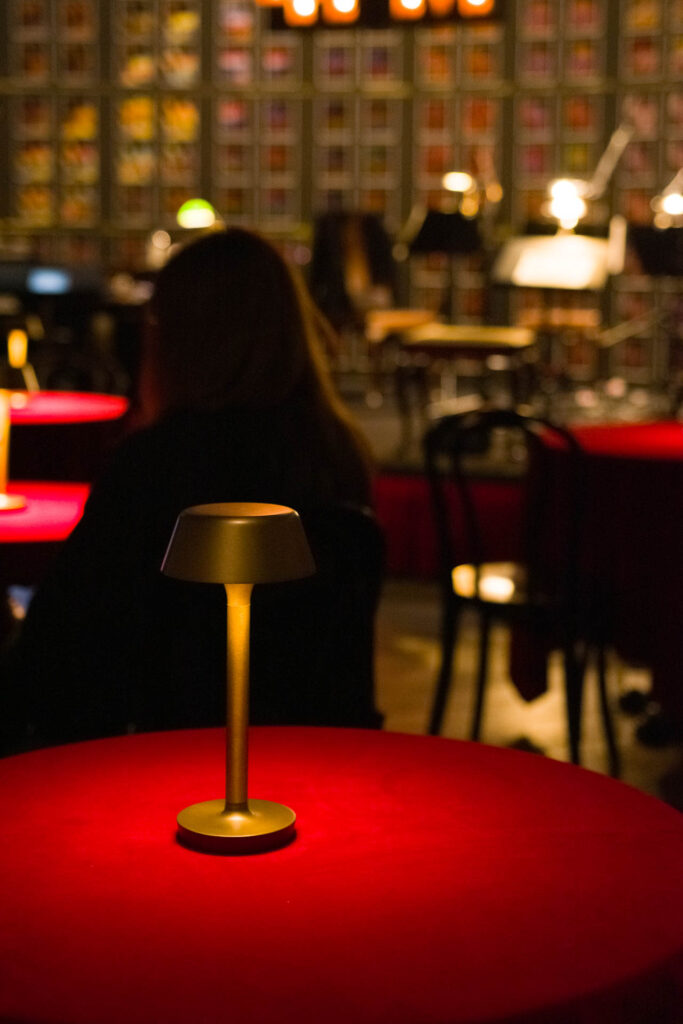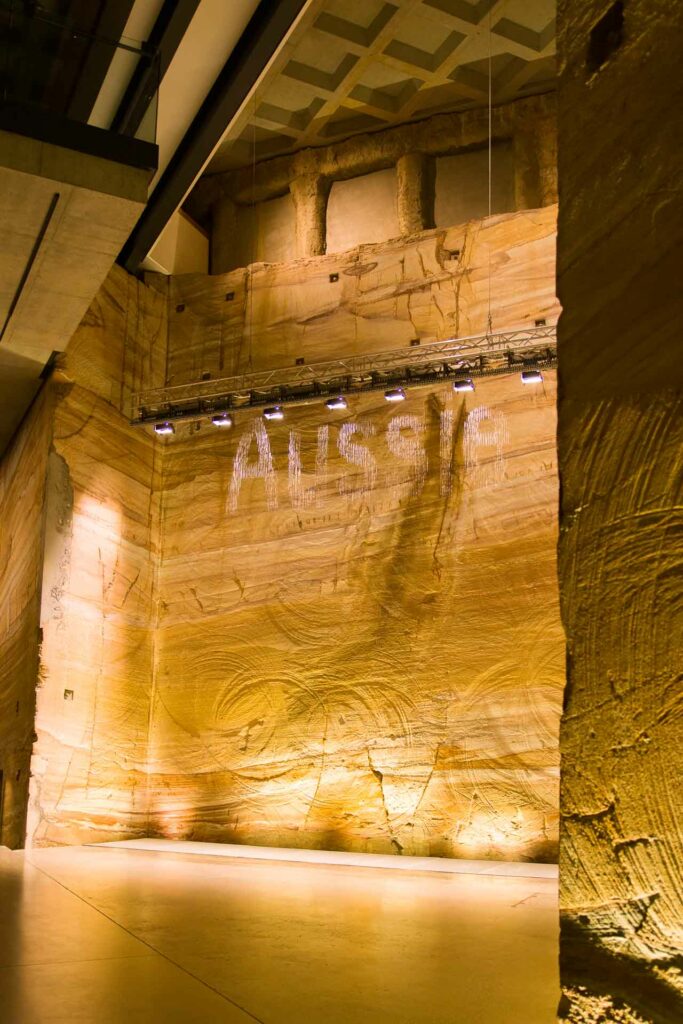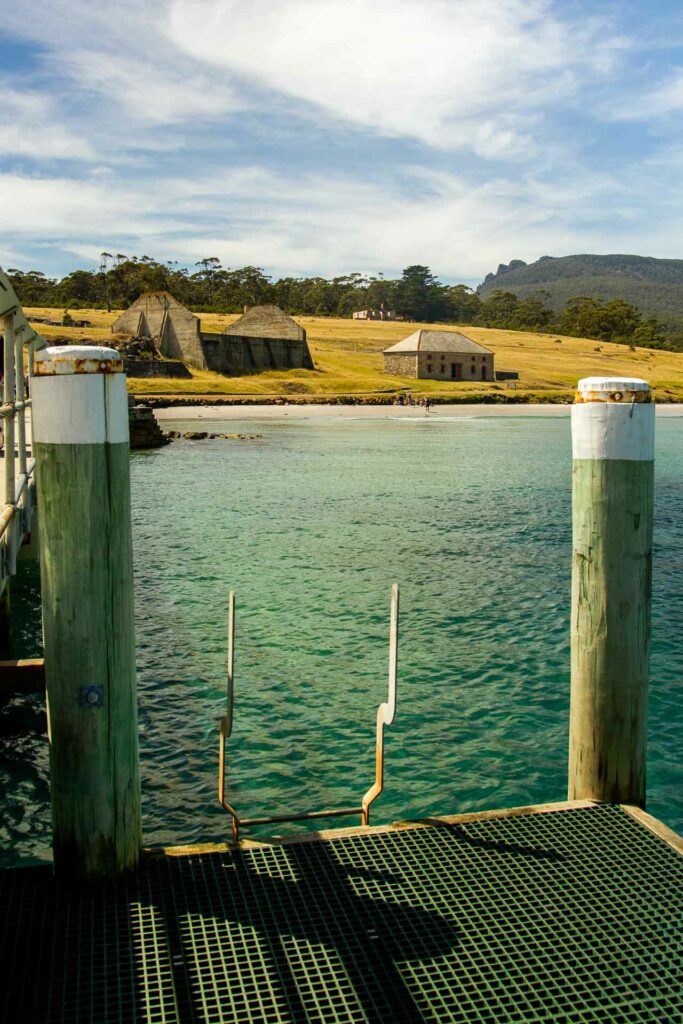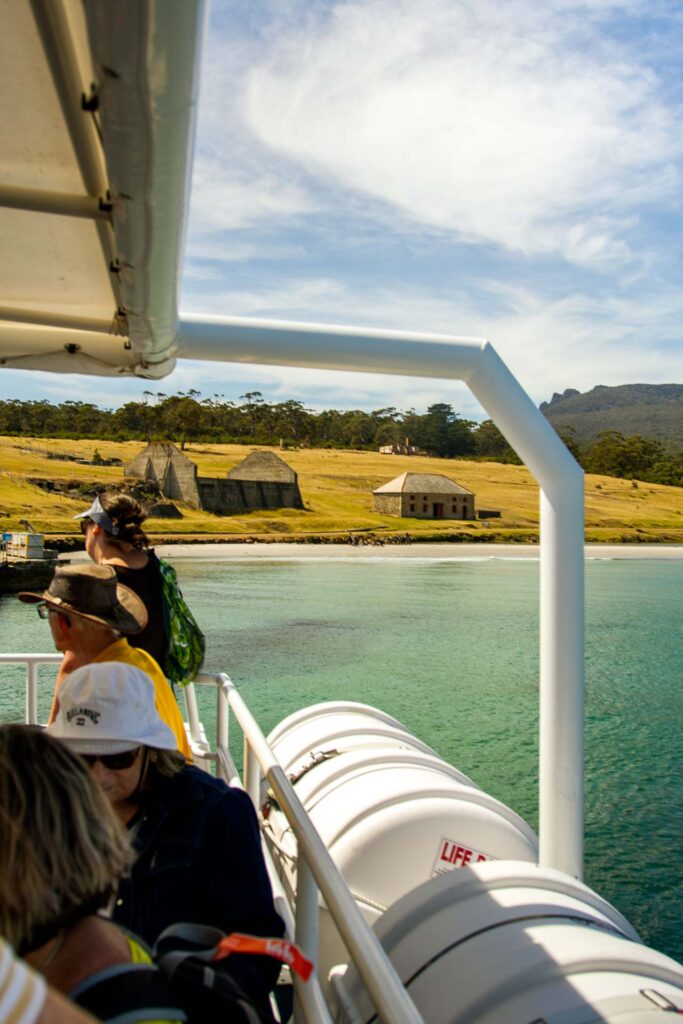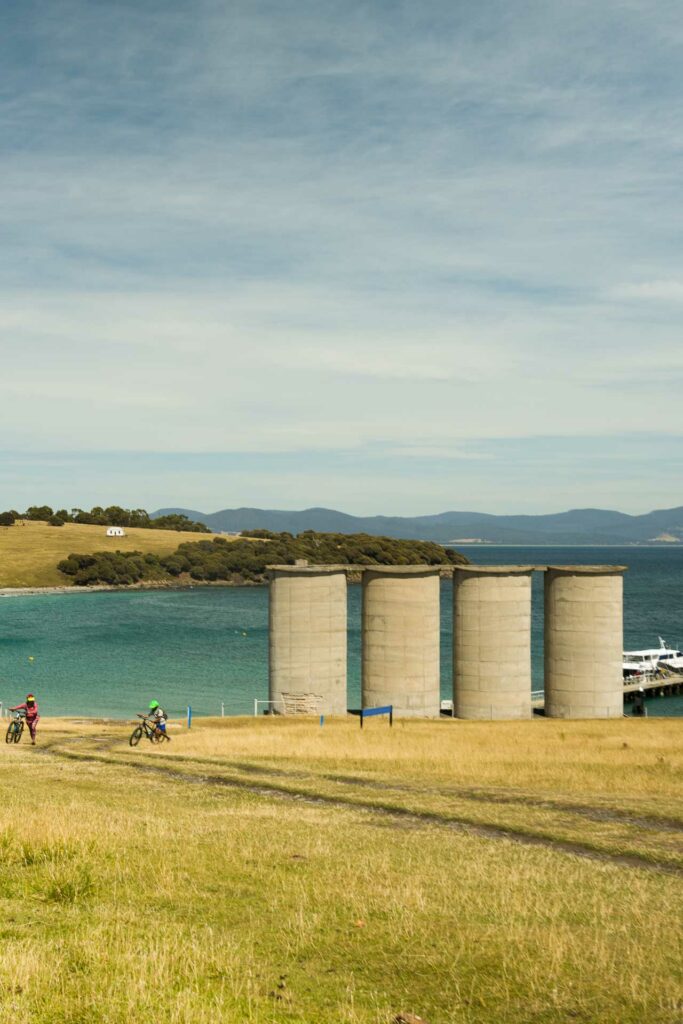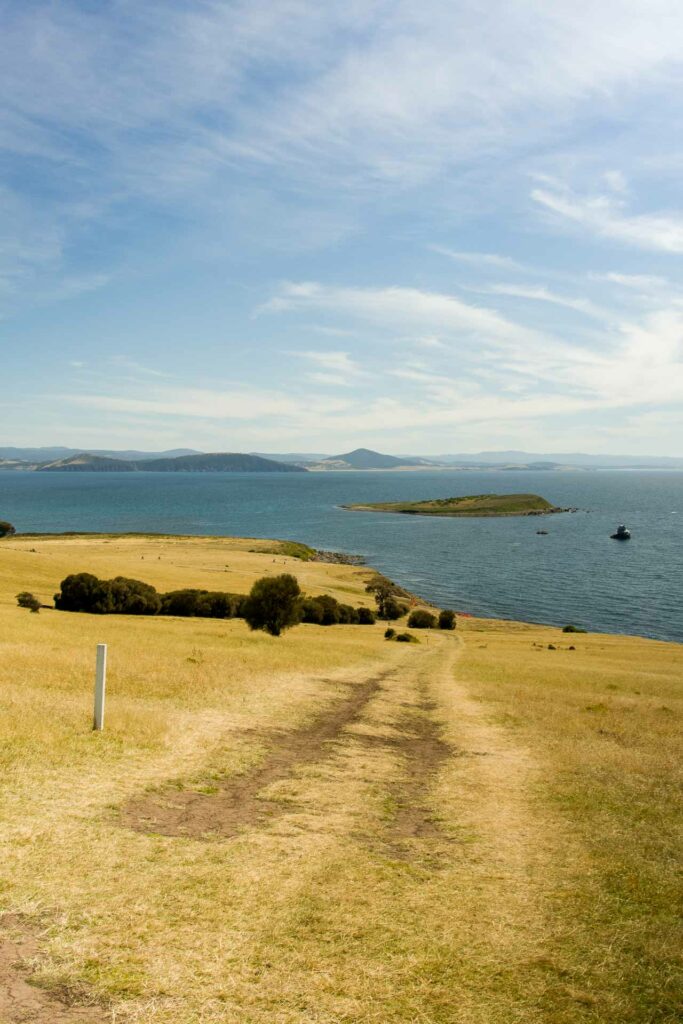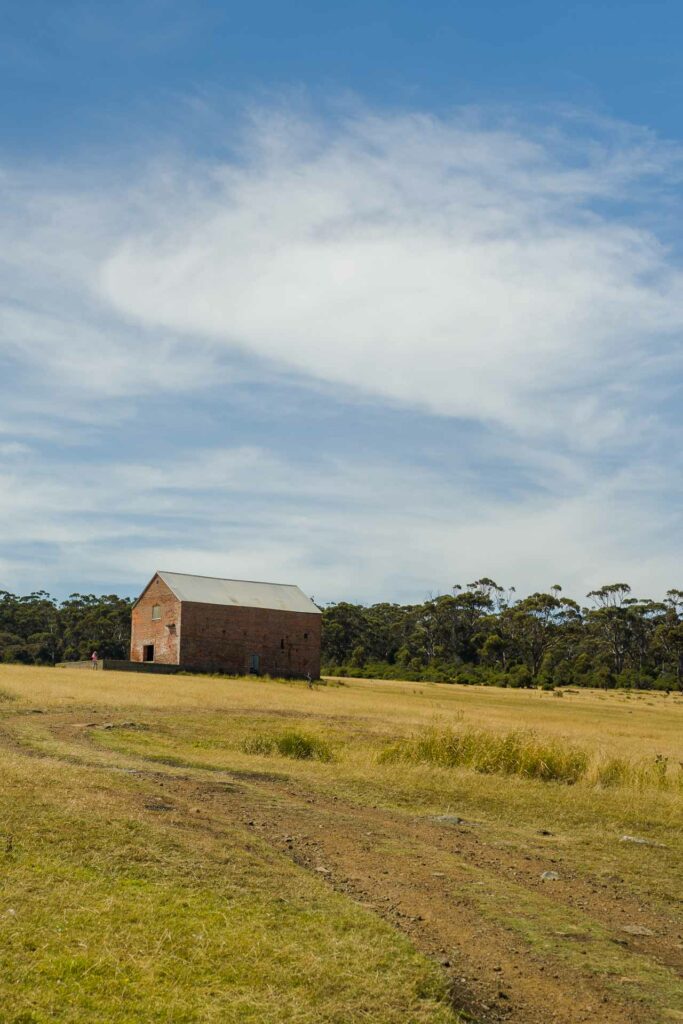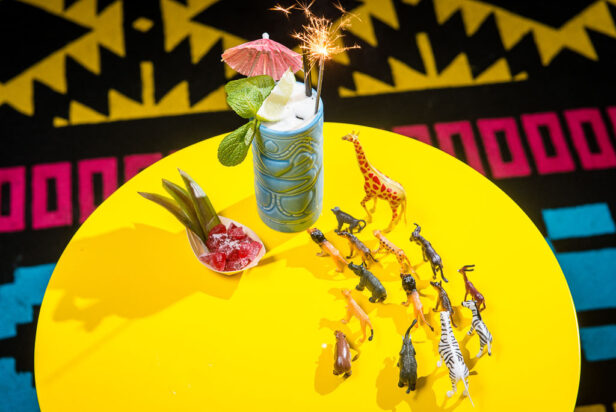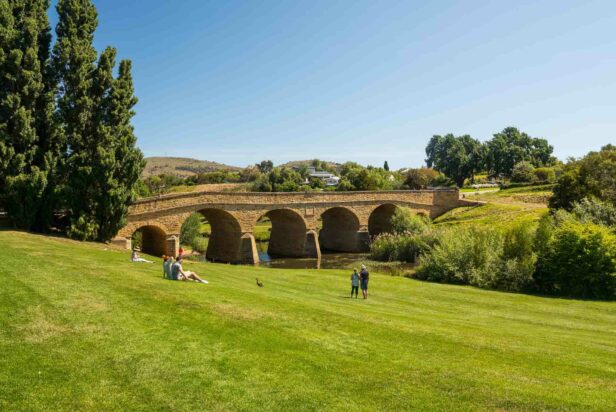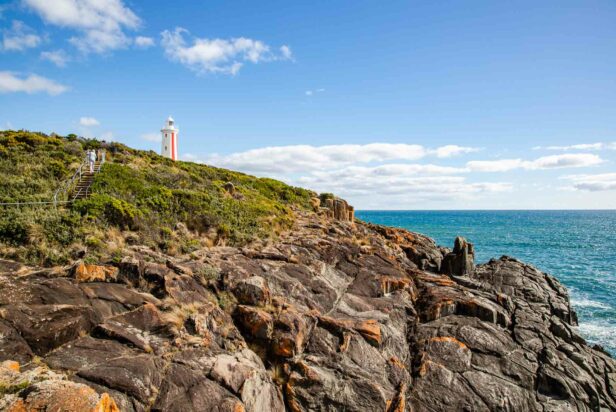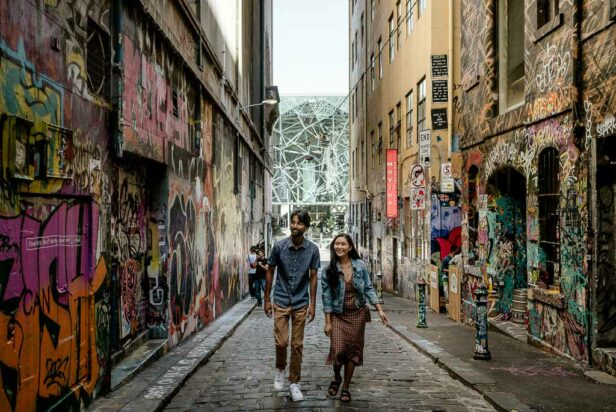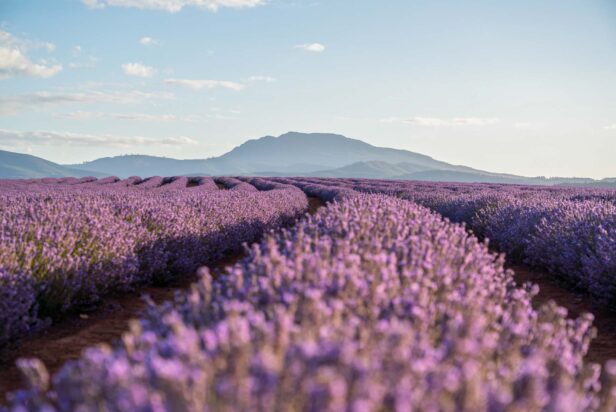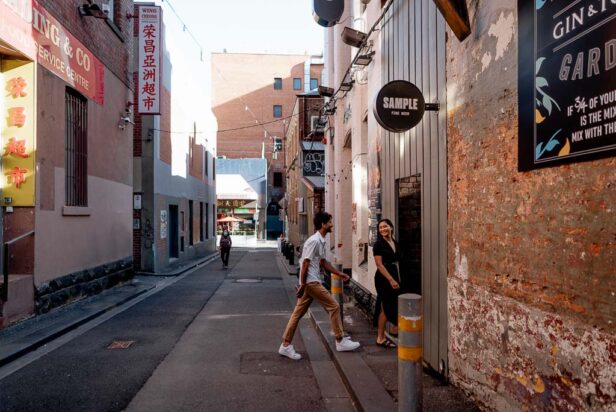Russell Falls
Mt Field
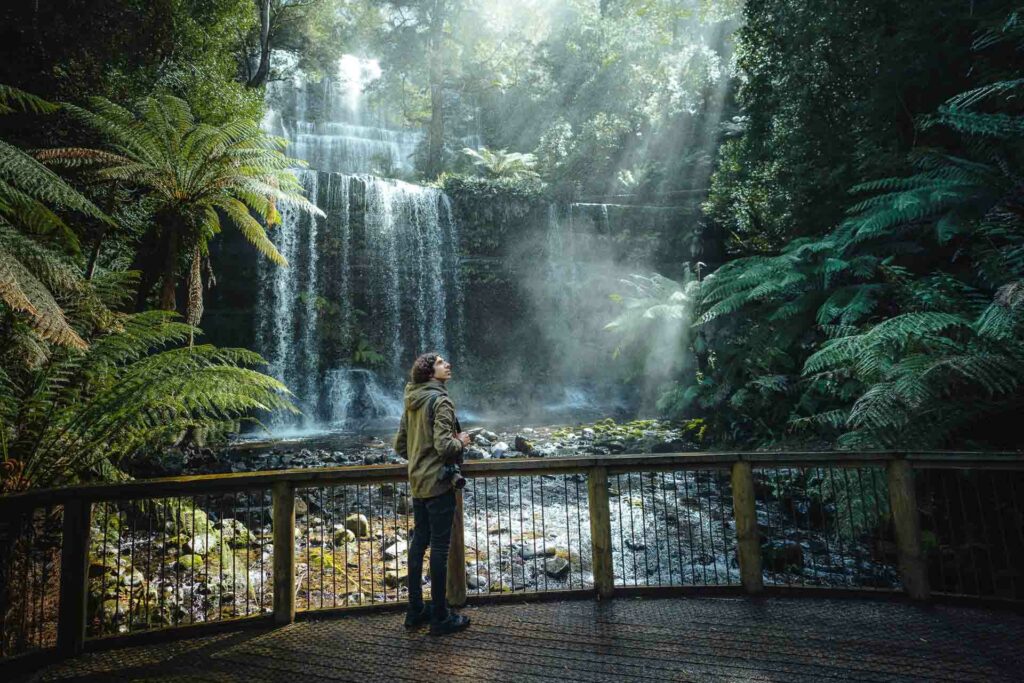
This mesmerising waterfall that flows down Mt Field is perhaps the most photographed in all of Tasmania.
Russell Falls was first discovered in 1856 and originally called Brownings Falls. Mount Fields soon became a popular destination and in 1885 it was protected as Tasmania’s first nature reserve.
Russell Falls is easily accessible via a short fifteen-minute walk through towering swamp gums.
The Nut
Stanley
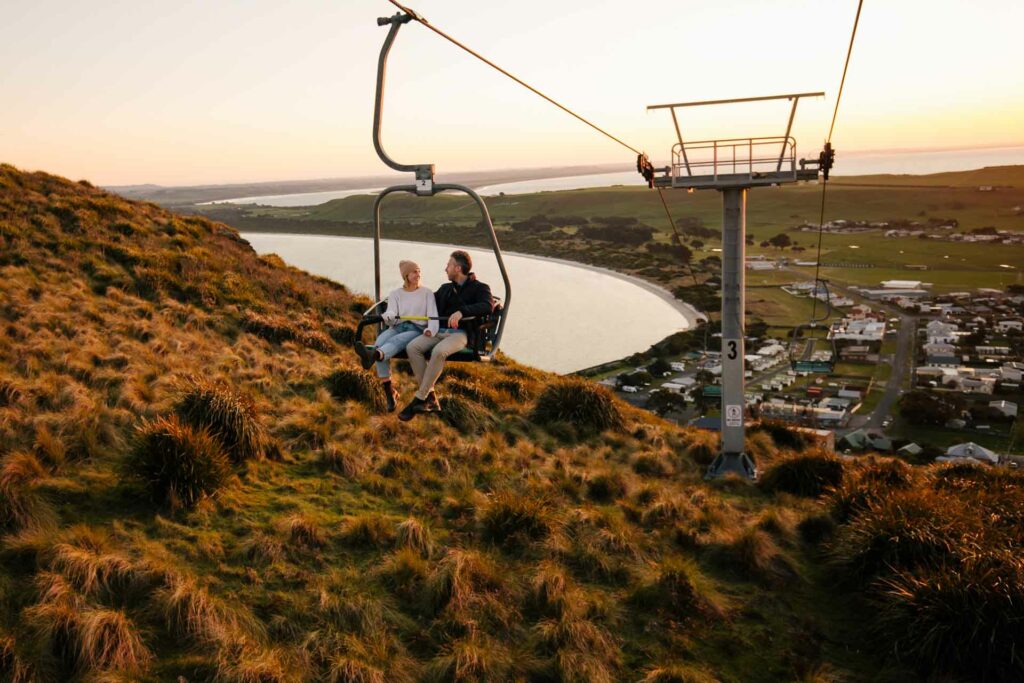
The Nut was a volcano about 25-70 million years ago; now, it’s a tourist destination. Climbing The Nut takes twenty minutes as you ascend 152 metres to the summit.
Alternatively, you can buy a ticket to the chairlift and relax as you float to the top.
MONA
655 Main Rd, Berriedale
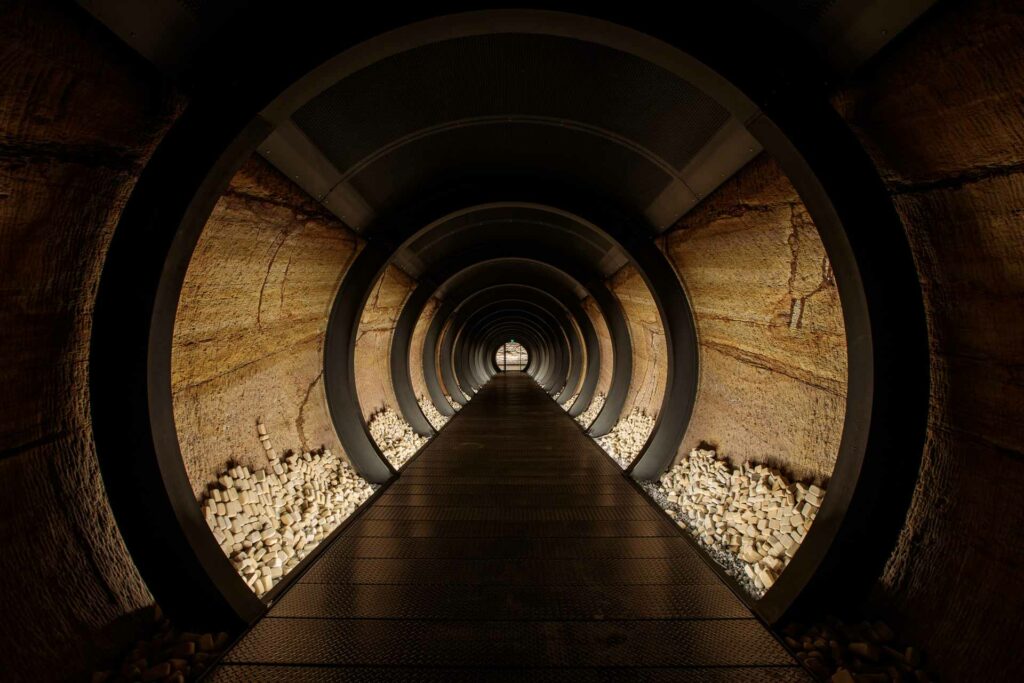
MONA, where do I start? Maybe Tasmania’s most well known attraction. David Walsh, a multi-millionaire gambler, created the Museum of Old and New Art to (in his words) ‘bang above [his] weight’. MONA showcases Walsh’s $100 million private art collection and hosts some quirky events.
The building design is incredible; it is etched into the side of a cliff on the River Derwent.
MONA has several restaurants, a bar and a hotel. It is a wacky experience. Entry is free to Tasmanian residents, and there is a small cost for inter-staters/foreigners.
Bicheno Penguin Tours
70 Burgess St, Bicheno
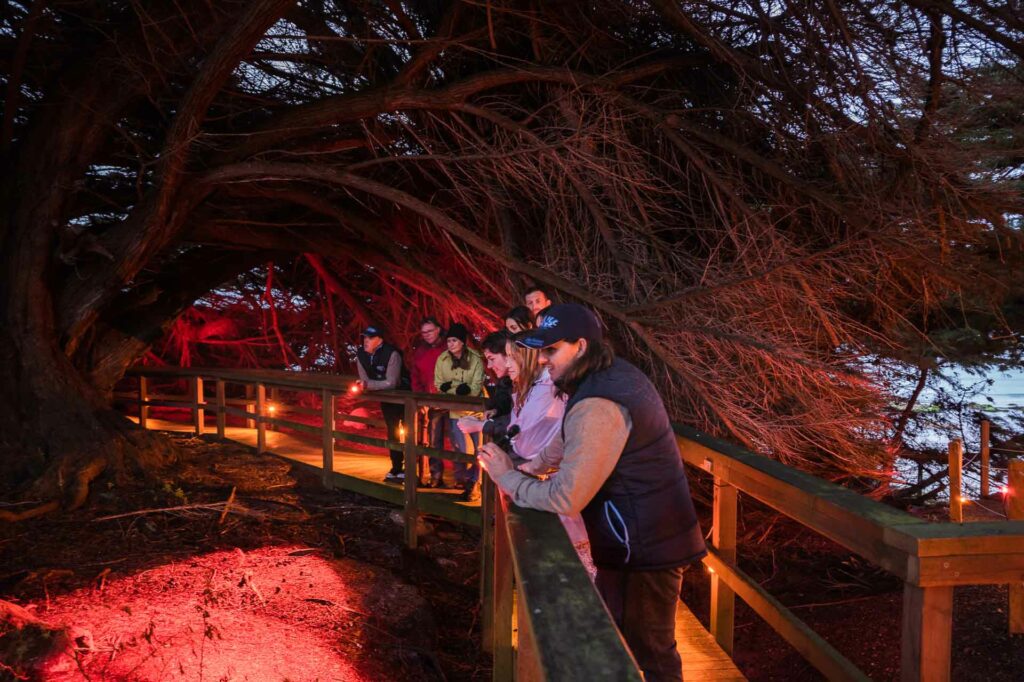
In the early 1990s, the Bicheno penguin colony suffered repetitive dog attacks. Bicheno Penguin Tours was created as a ‘business to protect nature and since then has helped restore the little penguin population from a low of 40 to 600. They converted a paddock into a penguin habitat where they monitor the penguins.
On this guided tour, you’ll take a short bus ride to their own private penguin rookery.
Tessellated Pavement
380 Pirates Bay Dr, Eaglehawk Neck
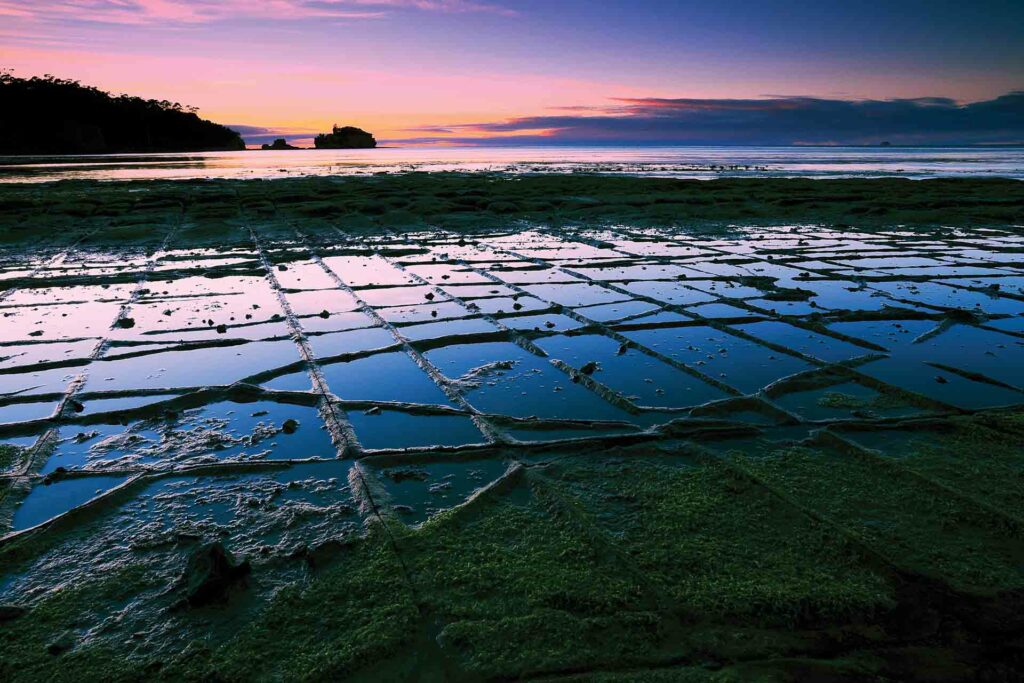
This tiled rock formation is a peculiar natural phenomenon. On the journey to Port Arthur, the Tessellated Pavement is a flat bed of stone engraved with straight intersecting lines. It has formed organically over time through a process called ‘jointing.’
Gordon River Cruise
24 Esplanade, Strahan
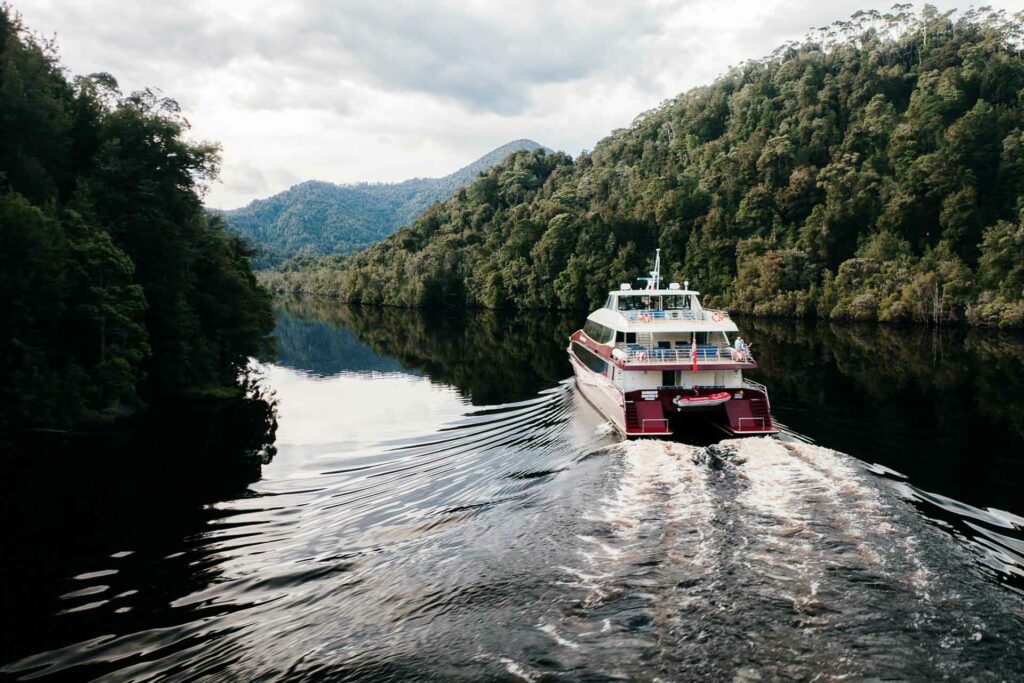
The Gordon River Cruise departs from Strahan and takes you to Hell’s Gates – the narrow entrance into the Southern Ocean – and Sarah Island – a nineteenth-century penal colony.
You’ll learn the area’s history while enjoying drinks and food from the bar. It’s a six-hour cruise and one of the most popular ways to take in the west coast’s raw beauty.
Port Arthur Historical Site
Historic Site, Port Arthur
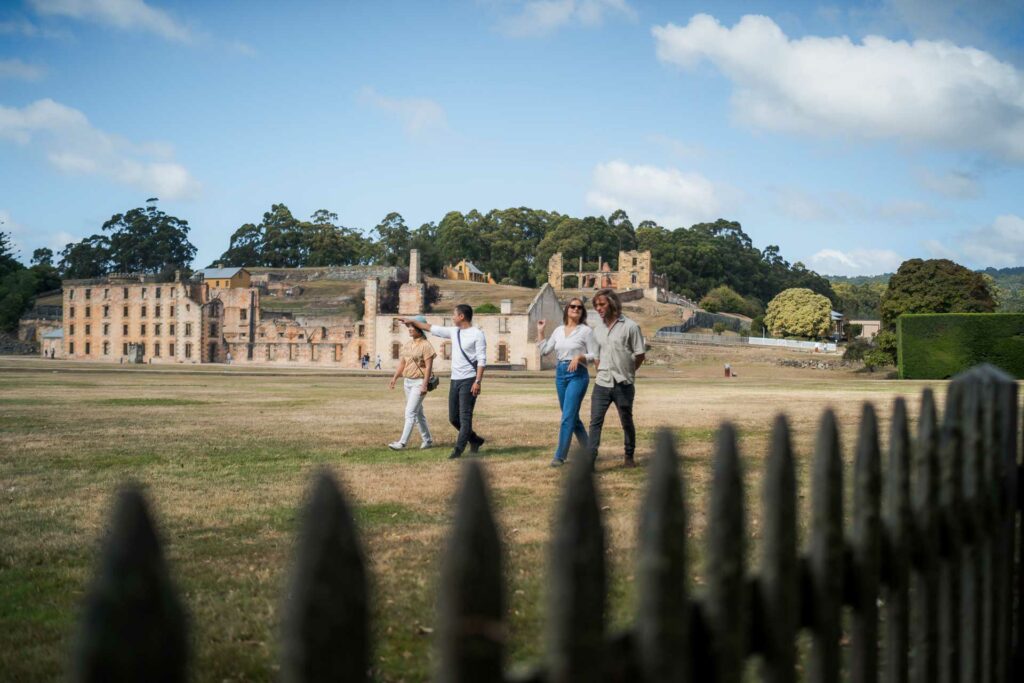
Port Arthur is a town and former convict settlement on the Tasman Peninsula. The settlement began in 1830 and was the destination for convicts deemed the most hardened of British criminals. The remnants of the prison are a popular tourist attraction.
An entry ticket includes a guided tour as well as a harbour cruise. Additional tours include a lantern-lit ghost tour and the Isle of the Dead Cemetery Tour, showcasing the final resting place for over 1000 convicts.
Bridestowe Lavender Estate
296 Gillespies Rd, Nabowla
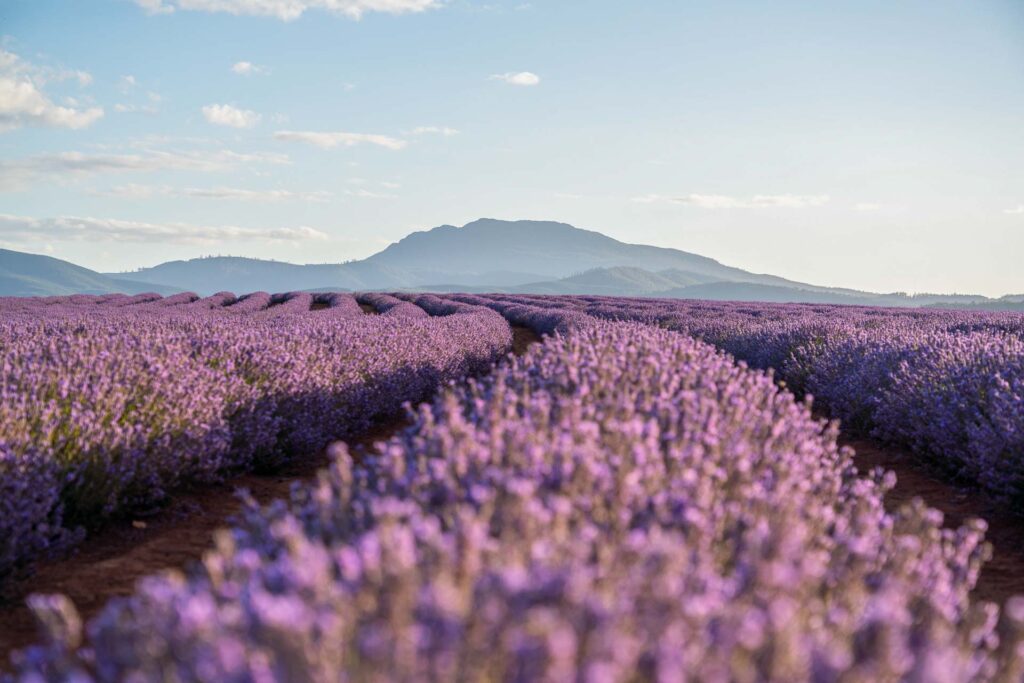
Tasmania’s passion for lavender began at Bridestowe Lavender Estate.
In 1921 London perfumer CK Denny migrated to Tasmania with his family, bringing a packet of lavender seeds from the southern French Alps.
Tasmania had a similar climate to Provence, making it ideal conditions to grow lavender. Today, the Bridestowe Lavender Estate welcomes over 50,000 people a year.
Bridestowe Lavender Estate is a fourty-five minute drive from Launceston and covers 260 acres; it is the world’s largest privately-owned lavender farm. The iconic curved rows are unique to Bridstowe, the were implemented to better capture and manage rainfall.
They are open to the public to wander through the fields, take photos, and even enjoy a picnic. There is also a cafe on-site that serves signature lavender-infused ice cream.
Mount Wellington
Wellington Park, Hobart
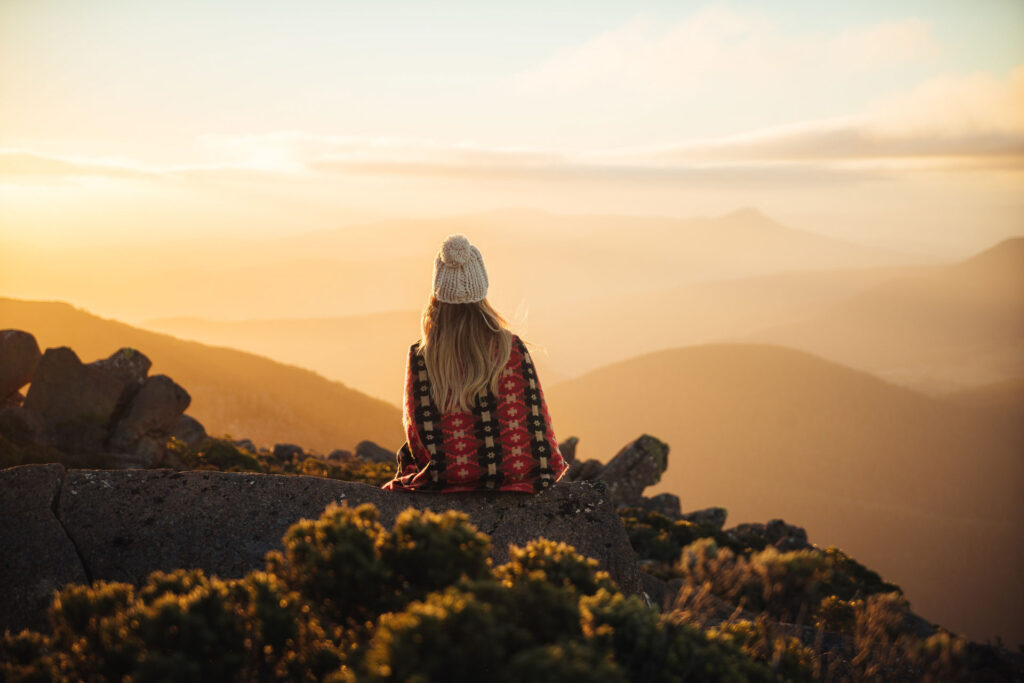
Mount Wellington looms 1,271 metres (4169 feet) above Hobart. The mountain provides a jaw-dropping lookout accessible by car and several bushwalks, including The Organ Pipes.
These column-shaped cliffs were formed in the Jurassic period when Tasmania was separating from Antarctica. Mount Wellington is also one of the best (and easiest) places to enjoy the snow.
Mount Wellington is only a half-hour drive from Hobart, and you can often see the snow-capped peaks from within the city. You can also check the snow-cam for a better idea of the conditions. Or take the dedicated bus that takes you straight there.
Pinnacle Road will take you to the peak; it is a windy but safe overall, and it’s accessible by caravans and motorhomes.
There is no need for a Parks Pass, and entry is always free.
Cascade Brewery
140 Cascade Rd, South Hobart
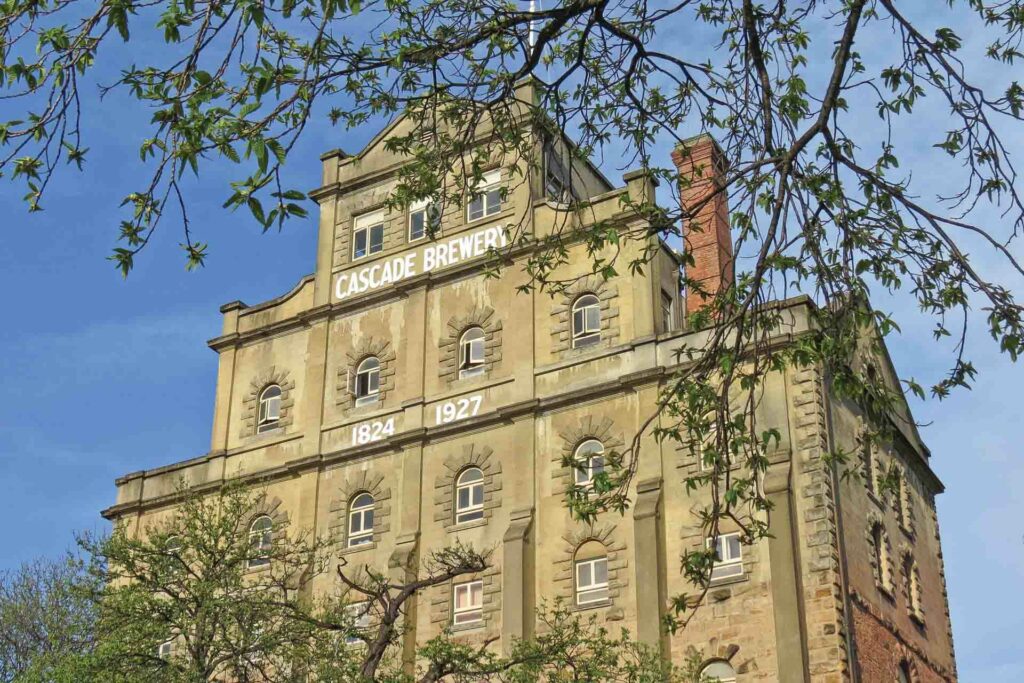
Cascade is the oldest operating brewery in Australia and produces Tasmania’s most popular beer, Cascade Draught. Just a ten-minute drive out of Hobart, Cascade Brewery offers several experiences for beer lovers.
Take a guided tour, learn about their brewing process, visit previously unseen areas, and then finish with a beer paddle. You can also stroll the lush gardens and settle in at Cascade Brewery Bar.
Cascade is easily accessible by bus from the city centre. Take the 446 from near the waterfront, and there’s a stop at the brewery.
Cradle Mountain
Lake St Clair National Park
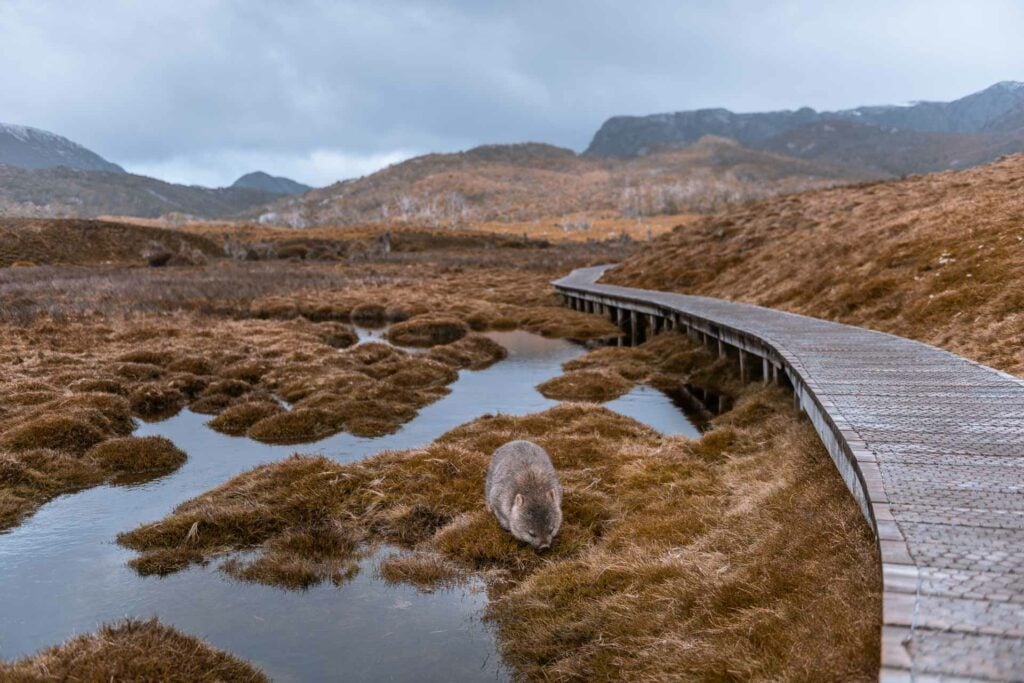
Cradle Mountain is Tasmania’s most famous peak. It is the fifth highest in the state and stands above the tranquil Dove Lake. You can tackle a visit to Cradle Mountain in a day or stretch it out over a week.
Arrive at the Cradle Mountain Visitor Centre, and book the shuttle bus; cars aren’t allowed into the grounds.
Dove Lake is the most accessible walk; this 6km trek around the lake will take 2-3 hours to complete.
Cradle Mountain is also a great place to enjoy the snow. There is a substantial amount of snowfall during Winter, and with the great selection of walks, it’s accessible to most.
Maria Island
Maria Island
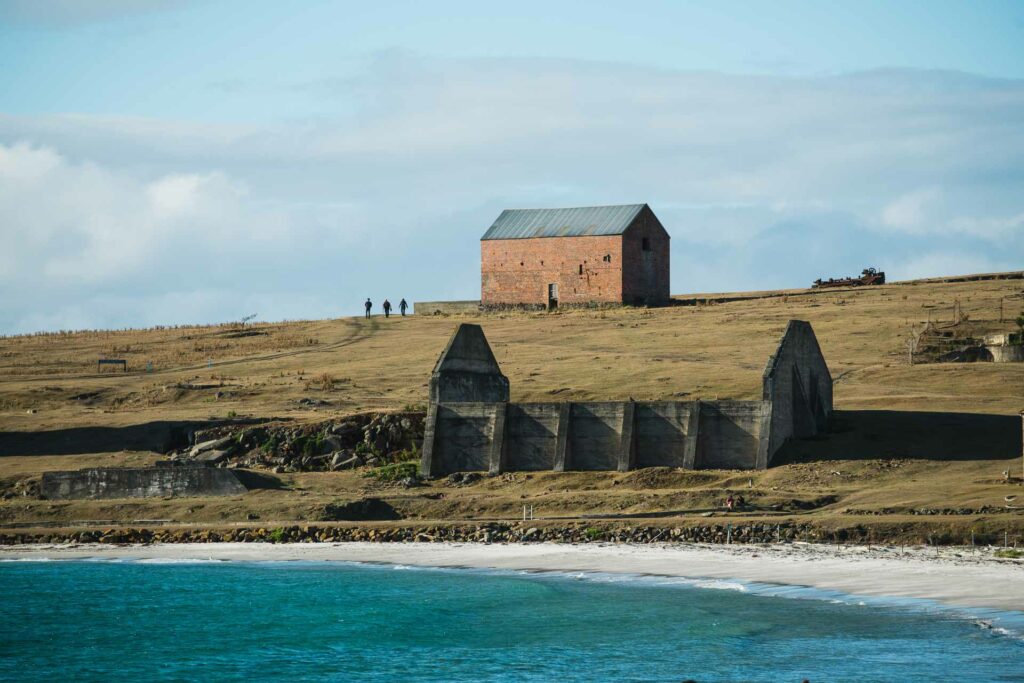
Maria Island is a national park off Tasmania’s East Coast, accessible only via a passenger ferry from Triabunna. There are no cars on Maria Island, no shops, pubs or cafes; you must be 100% self-reliant.
What you will find, are convict sites and some of Tasmania’s best nature spots. Explore Darlington Probation Station, and old convict site used prior to Port Arthur. On the west side of the island are the photogenic painted cliffs, accessible only within two hours of high-tide.
Maria Island can be visited over several hours, or you can camp over night; however there are no hotels, tents only.
The ferry from Triabunna departs several times a day and costs approximately $50 per adult.
Taylor was born and raised in Tasmania. He moved to Melbourne to study Film & television, and went on to start a marketing agency for hospitality.
He has a love for rock ‘n’ roll bars & New York-style pizza. In 2020 he was amongst the top 1% of Frank Sinatra listeners on Spotify.


